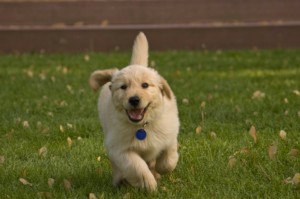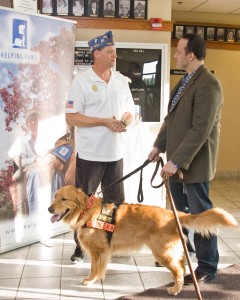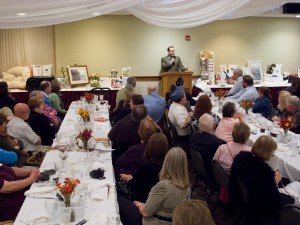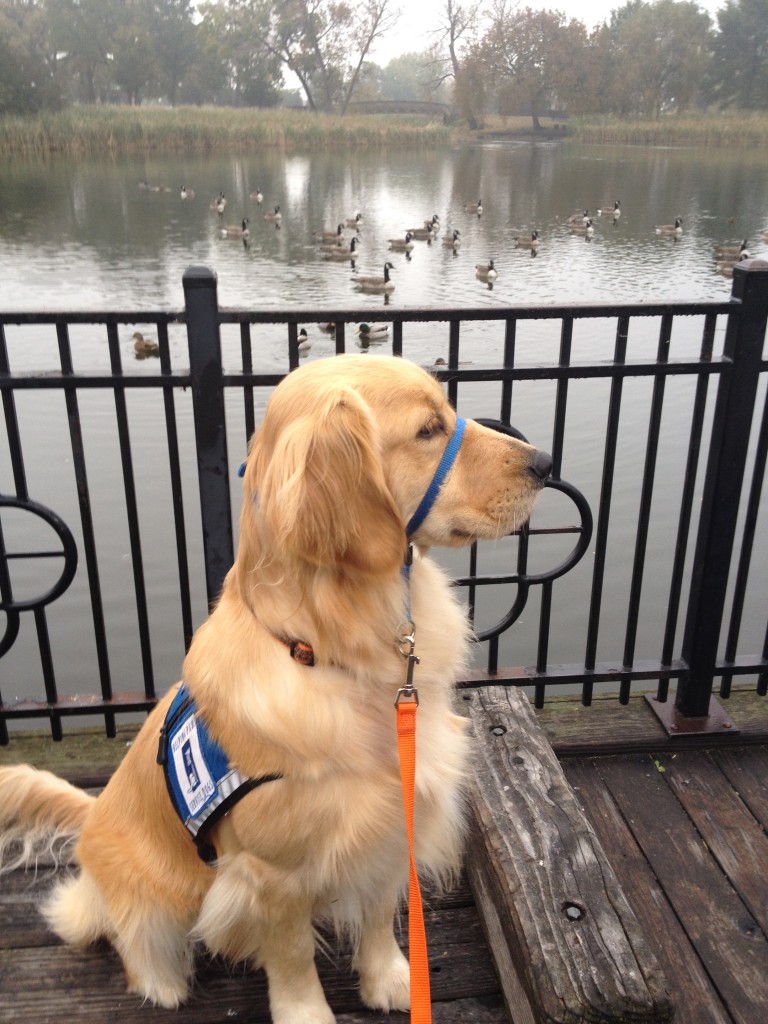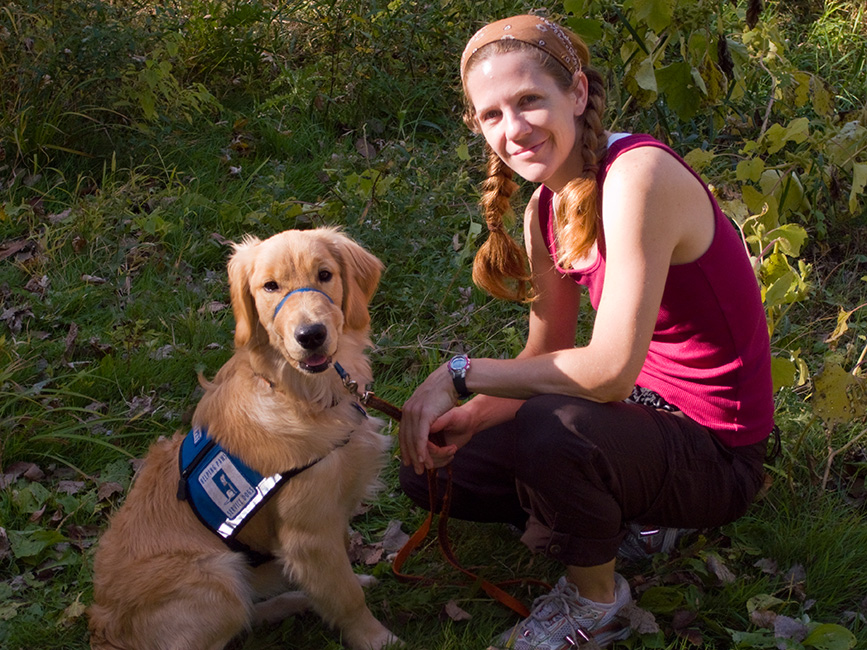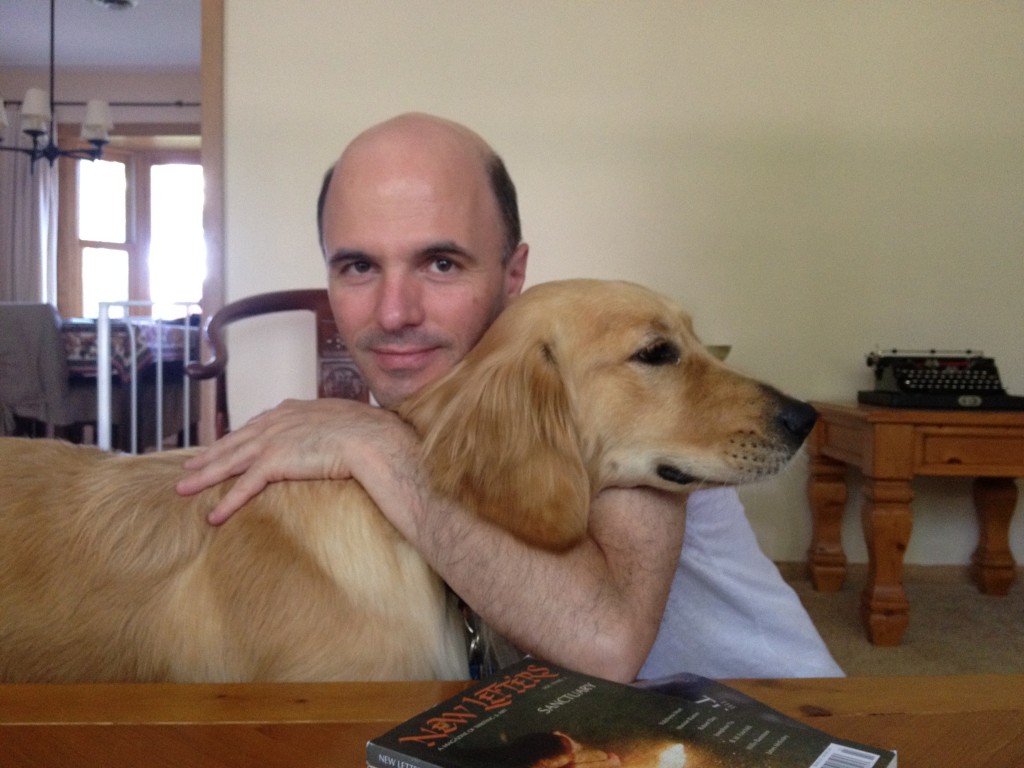Seva is an awesome dog.
But do you know that as a puppy, we called her Dingo? And Bitey-McBite-Bite? And she didn’t let me sleep through the night for like six months. And she had something called puppy strangles that covered her snout in something that looked like chicken pox. And she got ear infections. And she chewed on her feet and I had to wash them with special antibacterial stuff from the vet. And she had a bunch of UTIs and then had to go through a heat cycle before being spayed. And….
The point is, she was a difficult puppy. There was a lot going on with her for the first 18 months, from being a high-energy chewing-biting little thing, to having a plethora of health issues. She tried my patience. A lot. And I am a very patient, very gentle person.
So, how did Bitey-McBite-Bite grow into the awesomest dog around? This is what I want to tell you about. The secret is training. The magic is in how Helping Paws teaches us to teach the dogs.
Seva has a sweet disposition, but I don’t think she’d be as sweet, mellow, gentle, and generally awesome if she’d been trained differently. And if we’d bought her somewhere as a pet, we would have trained her differently.
Why? Because of ignorance. Seva is actually my first dog, and Scott has commented many times that he can’t believe how good she is. He’s had dogs, dogs he raised, and none of them turned out as good as Seva.
Are you with me here? I’m saying that left to our own devices, the Dingo would probably still be a dingo. A more mature, calmer, better dingo, but a dingo nonetheless.
The secret is in the training.
• Her training began at eight weeks of age and continued week after week. In other words, start as early as possible and don’t get lazy about your training goals.
• Training is done only through a system of rewards. Puppies are not punished for being puppies. We use the clicker method. The first thing Seva learned was to associate a click with a reward. Then I had to click good behavior any time I saw it.
• Bad behavior is redirected, not punished. Replace the sock with a chew toy. Move the puppy outside and clean up the accident. When the puppy goes berserk, exercise her, don’t stifle her energy.
•Training develops a set of skills that need to be practiced, and practice is guided by a patient, rewarding mom/dad/trainer. You wouldn’t toss a sneaker at a five year old kid and expect him to tie it on his own, and puppies don’t learn to walk nicely on a leash just by putting them on a leash. When Seva was learning to walk on a leash, I took her in the backyard and rewarded her for walking with me and for looking up to see what I was doing. That is how she learned to walk in step with her human.
• Every good behavior is shaped with rewards. It’s not about tolerating or not tolerating a behavior. Every day, from day one, when Seva ate, I put my hand in her bowl and stirred her food. I picked it up and put it back and fed her off my hand. I touched her legs while she ate. As a baby, she didn’t question my doing this. As a two-year-old dog, she never resource guards. Not even her best, favorite antler. She absolutely trusts us to give, take, give, and there is no fear that she won’t have enough. And, yes, I do still put my hand in her food from time to time.
• Never say “no.” This is probably the first thing we learned at Helping Paws. We do not say “no” to these dogs. I brought that home and put it at the top of the list of rules Scott and the kids had to learn before the puppy came home. I think that we don’t say “no,” because “no” can be used so harshly. People shout “no” at each other. People snarl “no.” People hurl “no” across the room. When you’re raising a puppy with rewards and patience, “no” gets in the way.
We say, “Ah-ah.”
You don’t sound half as frustrated when you say “ah-ah” as when you say “no.” I’ve been known to say “ah-ah” to Scott and the kids. They don’t really like that. I guess they’d rather I say “no” to them. I don’t know. I think “ah-ah” is kind of nice.

Running at 1 year.
The other day we had Seva on a flooded golf course. We let her sprint, because she loves to run. She’s the Black Stallion dog. Seriously. You should see her run. After a bunch of sprinting, she decided to check out the water and grab a drink. This water is full of blue-green algae that can kill a dog in minutes. I shouted, “Ah-ah!” like I’ve never shouted it before. I was scared to death for that moment when her head was bowed to the water. She obeyed. She left the water and she’s fine. If I had shouted “no,” she wouldn’t have understood.
Lack of training kills dogs.
Do you know that most dogs are given up to shelters between 9 and 18 months? That’s when a dog is in adolescence. Dog adolescence is worse than human adolescence, though much much shorter. With dogs, it’s like the terrible twos and the teenage years get rolled into one dreadful phase. The Dingo was a rotten teenager. All that energy needing some kind of channel, and she was finally big enough to counter-surf and get stuff off the table. Nothing was safe and, as a result, she needed constant supervision.
According to Cesar Millan’s website, the #1 reason dogs end up in shelters is lack of training:
1. Lack of training: Many people get a dog without realizing how much training is involved. Dogs do not come trained. They need diligent leaders who are willing to put in the hours setting rules, boundaries, and limitations, and spending time teaching them commands. Puppies do not come housebroken and must be taught to go to the bathroom outside. People fail to take this into account when bringing home a dog and ignore problems, which often lead to behavioral issues. Shelters are filled with dogs that have potty training, socialization, and obedience issues, all of which could have been prevented through proper training.
Adolescents can be hell.
During this phase, I remember telling sympathetic friends that, because I was with Seva all day and in charge of her training, I saw the little milestones Seva passed. I could be frustrated and tired, but those glimmers of “good dog” kept me going. And I felt all alone in this. The kids didn’t like her anymore and Scott…let’s just say he wasn’t a fan of hers during those months.
There’s biting, and then there’s biting.
Now, I want to point out that while Seva was also known as Bitey-McBite-Bite, she only bit us when she was playing. It hurt because those baby teeth are pointy as all get out. But she was never aggressive. And she never bit when she was caught off-guard by someone or something. It was not a reaction to us or her environment. It was teething and playing. And she has outgrown all that.
We trust her completely.
Absolutely.
100%
What’s a growl for?
Seva does not have an aggressive bone. She doesn’t even know what a growl is for. I have only ever heard her growl on occasions when there is a gate between us. She doesn’t like being separated from us. If her usual stare, whine, bark tactics don’t get me to come move the gate, she will say, “Grrrrrrruff!” It’s the most adorable growl I’ve ever heard.
Nature vs. Nurture.
Seva is an awesome dog, no doubt about it. I can’t tell you how much of her awesomeness is nature and how much is training. But I am positive that her training helped her develop her nature in the best way possible.
She’s not perfect. Don’t kid yourself. I could list a whole bunch of personality quirks and flaws, but at the end of the day, she’s still awesome!


